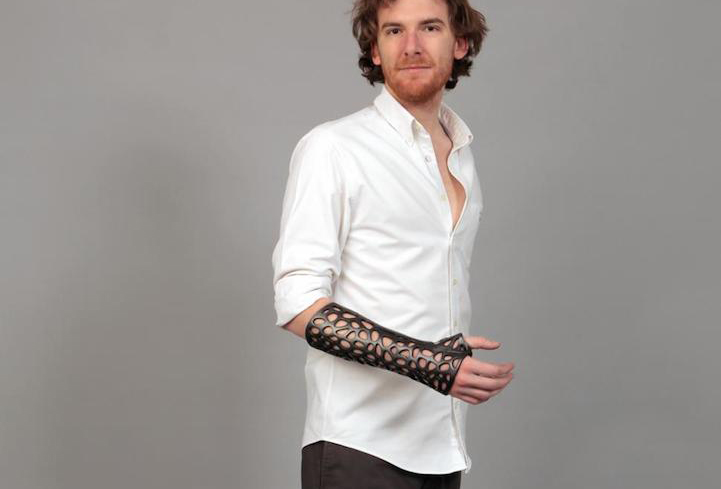A designer claims that his concept for a 3-D printed cast would shorten the bone-healing process nearly 40%. We ask hand surgeon Michael Hausman to weigh in.
In the near future, having a broken arm could look way cooler thanks to a new, black, lightweight 3-D printed cast that’s patterned like latticework and which uses an ultrasound device to make bones heal more quickly. Designed by Turkish industrial designer Deniz Karasahin, the Osteoid Medical cast recently won the A’Design Award in the 3-D Printed Forms and Products Design category.
The cast, which could be mistaken for a punk fashion statement, is filled with ventilation holes to reduce the itchiness, bulk, and smell that usually plague wearers of traditional plaster casts. The Osteoid is currently in concept stages, but if it were turned into a commercial product, would doctors embrace the design? We spoke with Dr. Michael Hausman, a renowned hand surgeon at Mount Sinai Hospital in New York City, about whether the Osteoid is viable for medical practices.

“Incorporating this technology would be more expensive than just a plaster cast or a non-custom splint,” Hausman says. The 3-D printed cast would be customized for each patient’s arm using a 3-D body scan of the area with the bone injury.
Hausman is a big proponent of ultrasound—his college and close friend Dr. Clinton Rubin did some of the original research into ultrasound for bone healing. When the Osteoid is hooked up to a low-intensity pulsed ultrasound (LIPUS) for 20 minutes a day, the designer claims it will reduce the time of the healing process up to 38%. The heal rate in “non-union” fractures, in which bones are completely separated, gets increased up to 80%.
“We know that ultrasound works,” Hausman says. “There’s good evidence, presented most recently in two papers published in the Journal of Bone and Joint Surgery, the leading journal in orthopedics.” One study used ultrasound for healing tibia fractures, and another showed it accelerated the healing of wrist fractures. The combination of two cutting-edge technologies—3-D printing and ultrasound healing—could make the Osteoid a revelation in the world of orthopedics, if production costs are streamlined.
And it’s certainly more attractive than the old mummy-like plaster designs. “I like the clamshell design, and that this model is black, which is the No. 1 cast color in New York,” Hausman says. The cast’s color can be customized, but as Hausman says, black “goes with everything.”
Source: Fast Co Design
































Leave a Comment
You must be logged in to post a comment.